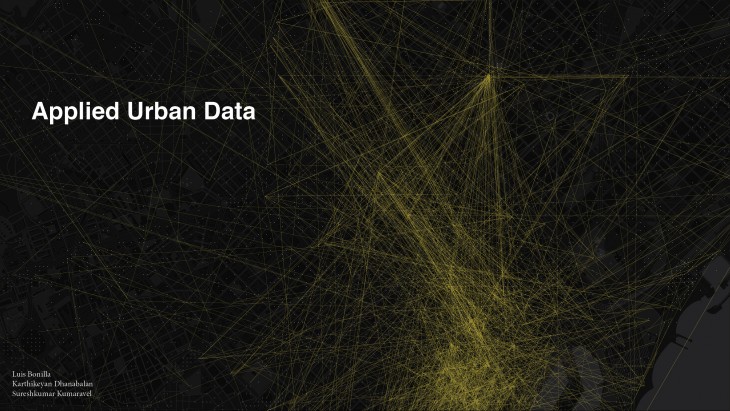
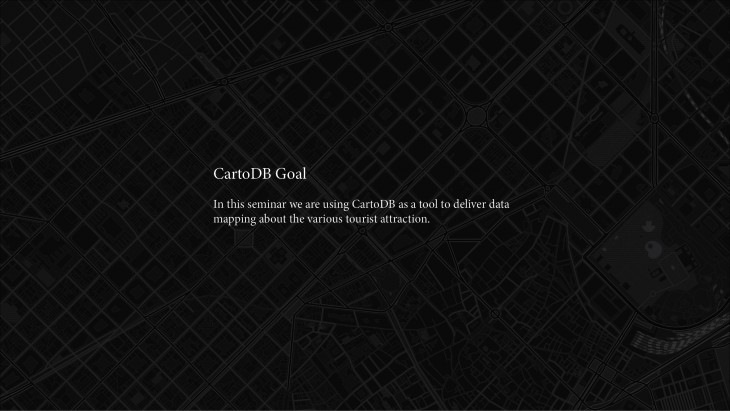
In the beginning we did not have any issue to work on with the datasets given to us. So we started to use those datasets and created maps related to Tourism in Barcelona using the basic hashtag keywords a common man would use if he is on a trip or tour.
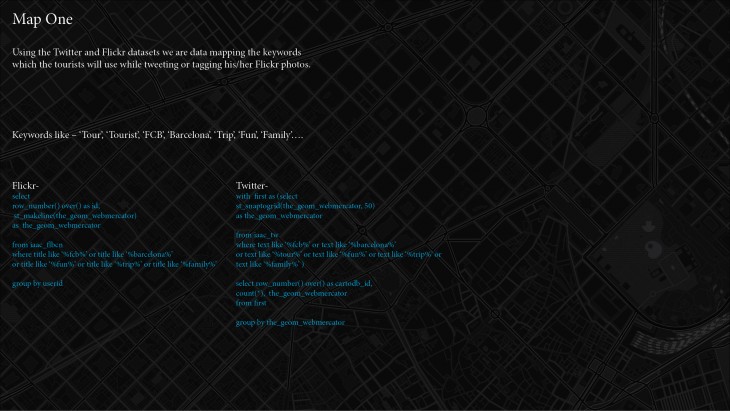
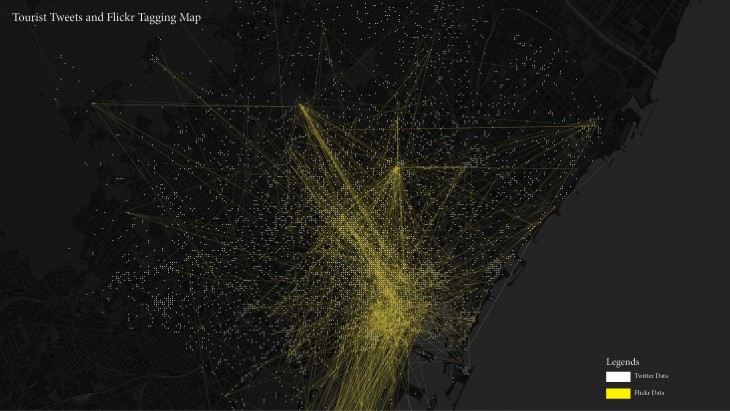
From the above map we found something very interesting about the tourist lcoations. So we wanted to know what makes them tweet or photo tag at that particular area in Barcelona.
So we filtered the keywords to more specific words very much related to Tourism and its attractions throughout Barcelona.
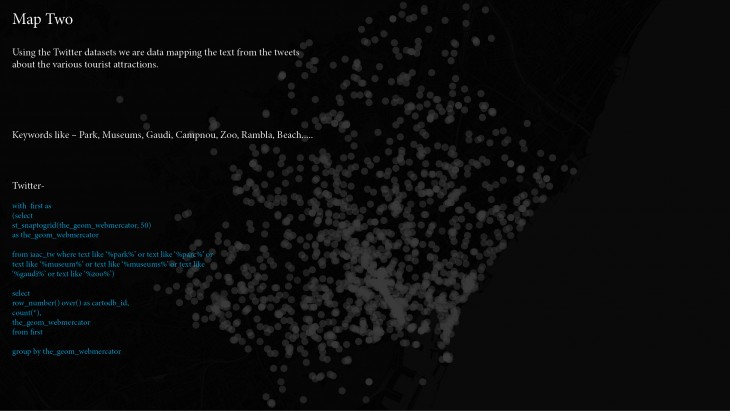
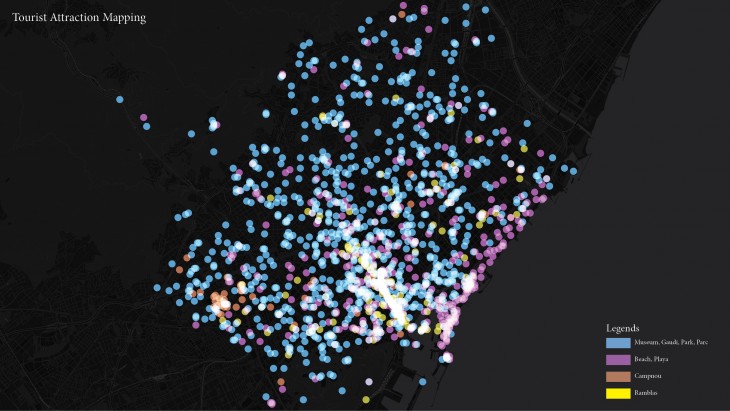
The result from those keywords was very interesting to our finding so we further filtered the search to more specific places and attractions according to seasons. So we removed La Rambla- which is a common place and Beach- which is visited only from mid Spring and during Summer seasons.
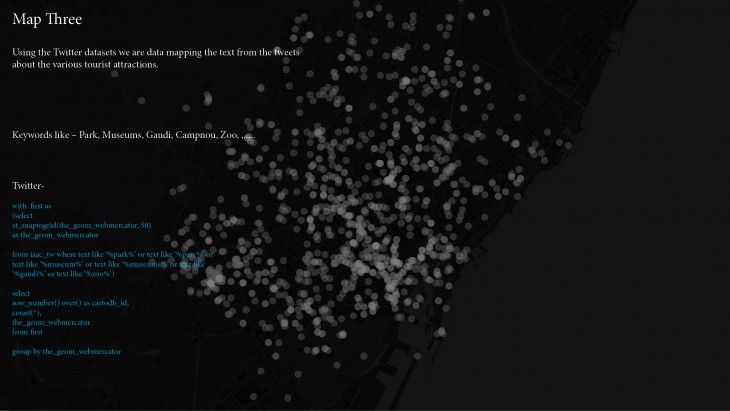
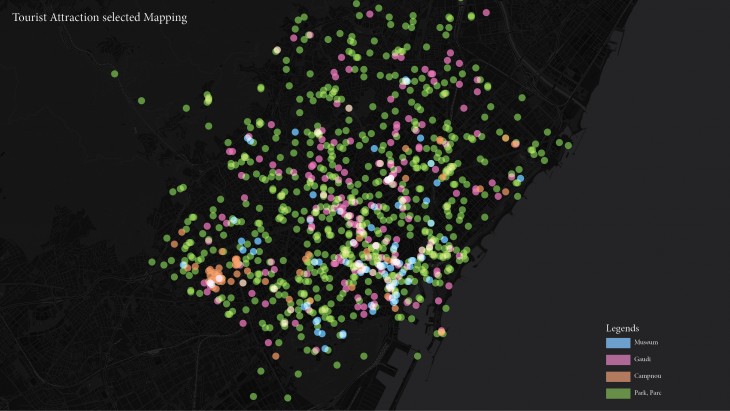
From the result, we started to map in detail about the various tourist attractions according to the tweets and photo tags from Flickr.
We did a mapping of all the tourist attractions in and around Barcelona in Mapbox website and exported the *.kml file to CartoDB.
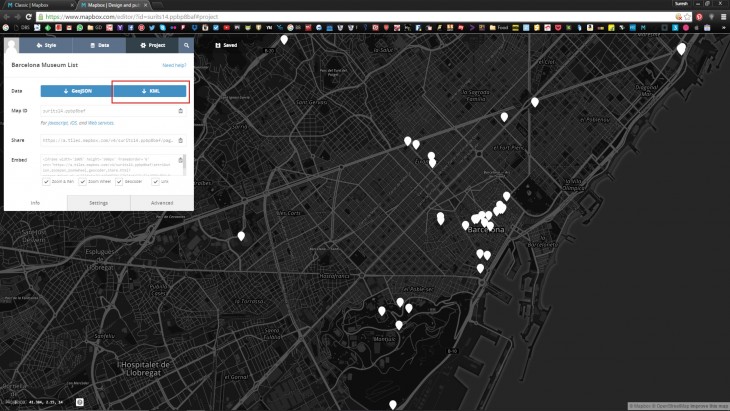
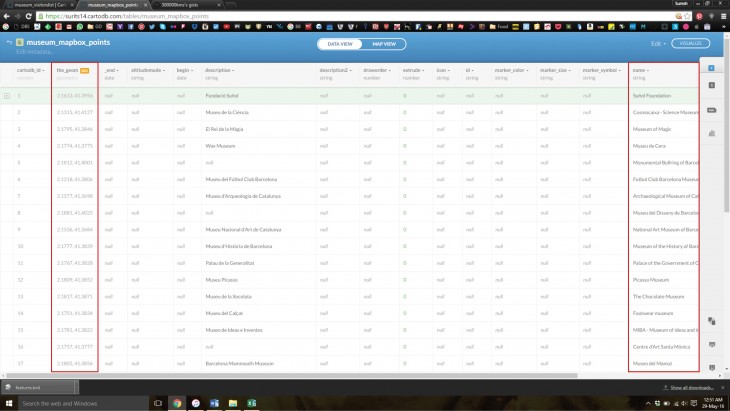
From an open source website sourced by the Barcelona government we got datasets on the number of visitors visited during the years 2010-2014 at the major tourist attractions.
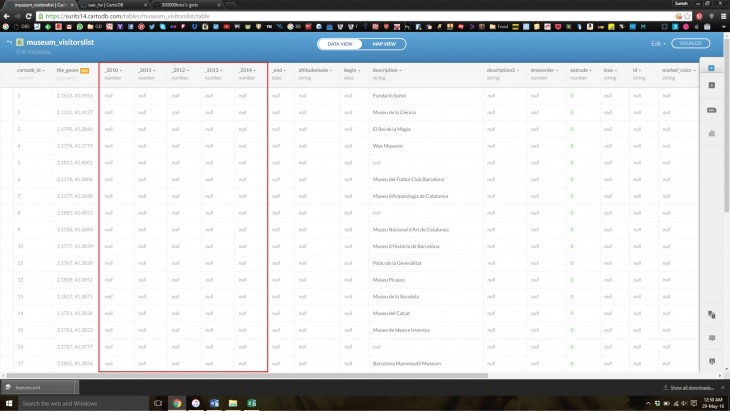
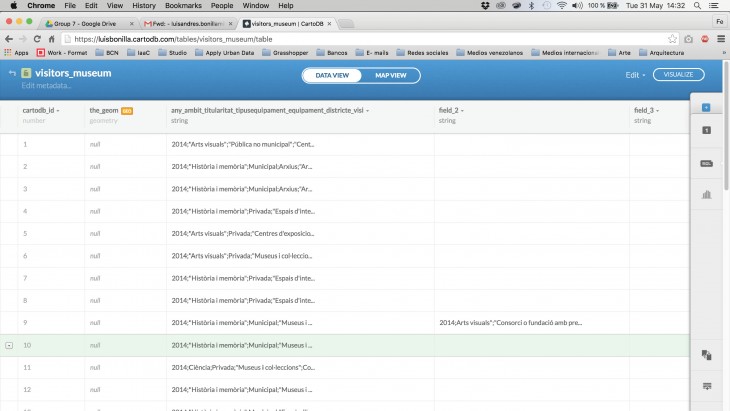
But those datasets lacked GeoLocation tag, which made it impossible to map them.
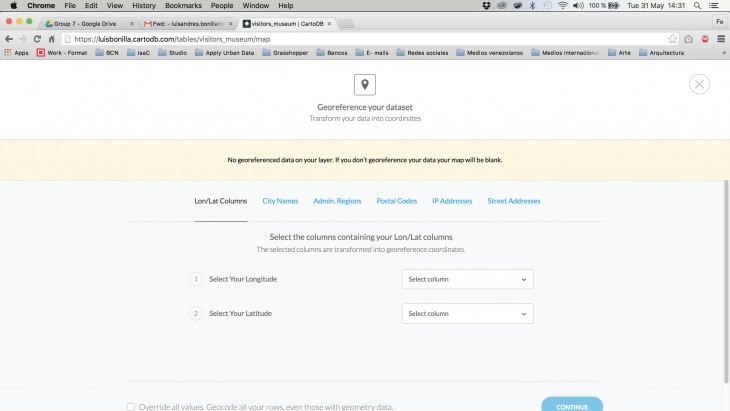
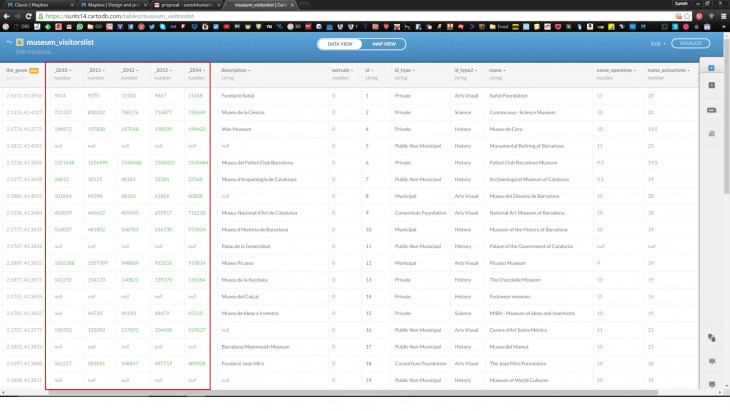
We hacked those datasets and created a new dataset on our own and we mapped the locations of the various tourist attractions along with its visitors according to different years.
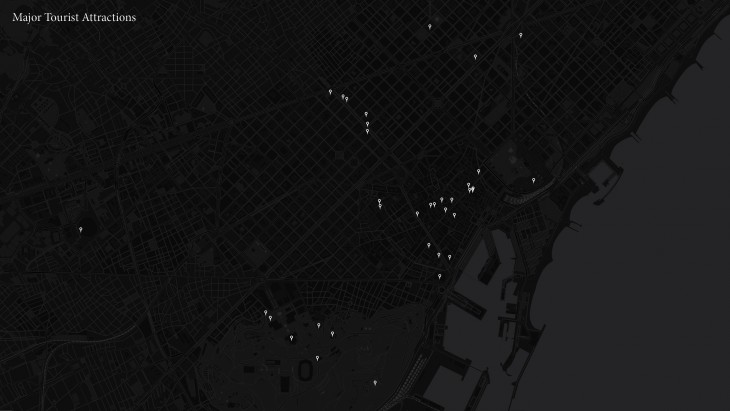
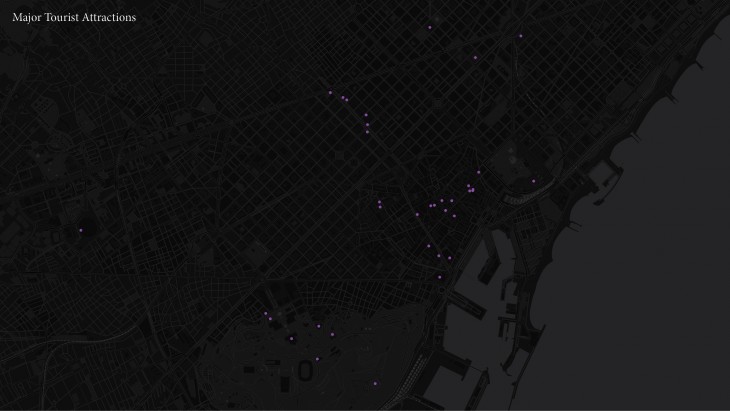
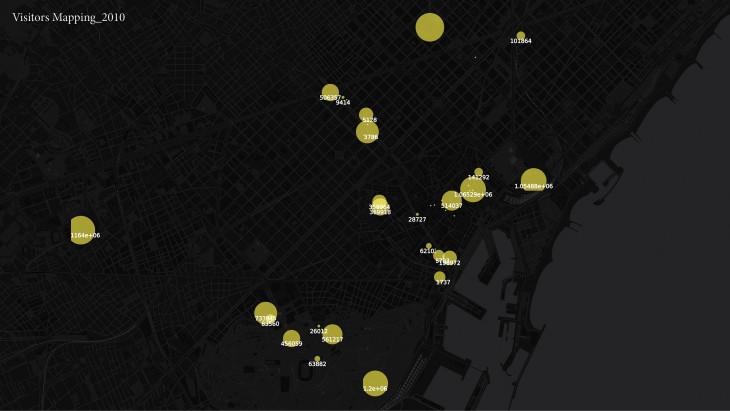
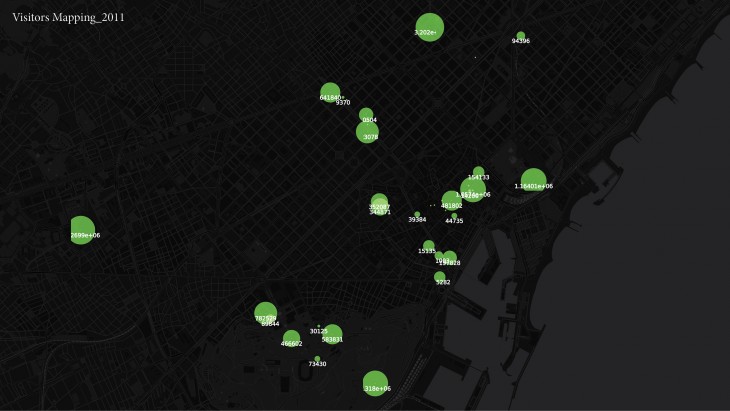
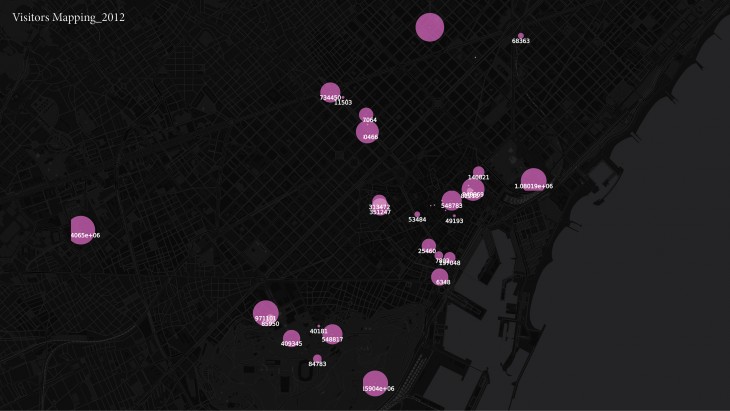
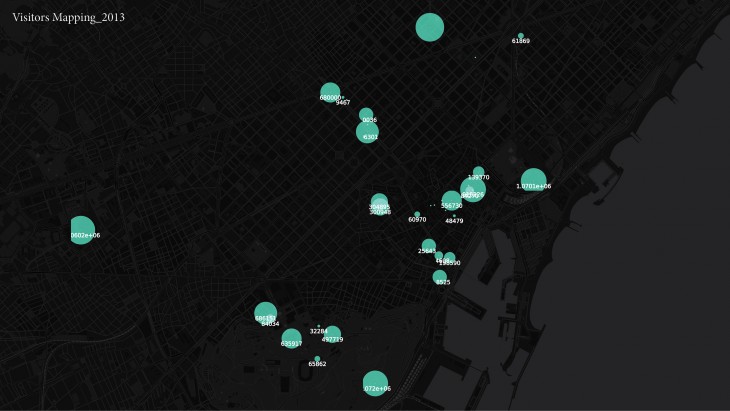
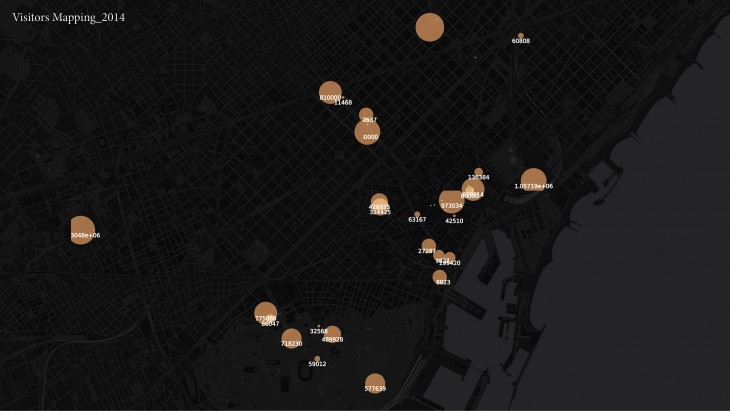
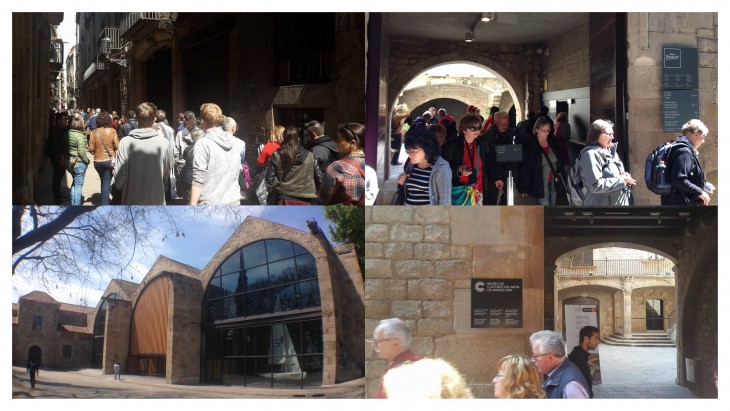
We went onsite to confirm whether the dataset numbers were accurate. From our case study we confirmed that the dataset was true and shocking where one of the Museum which was located opposite to Picasso Museum was empty whereas Picasso museum was among one of the most visited Tourist attractions. Which is also a proof from the numbers given in the dataset.
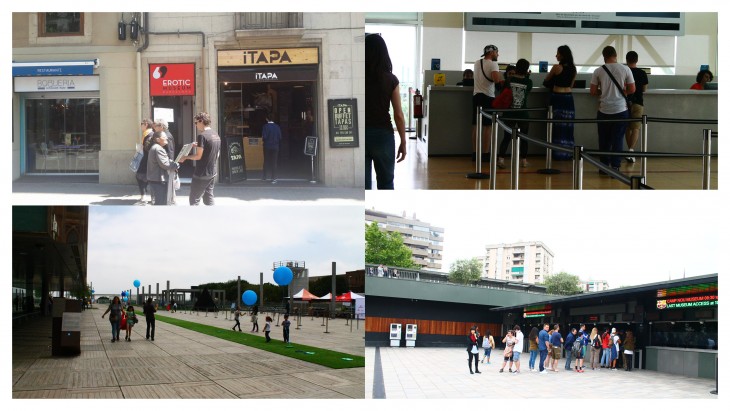
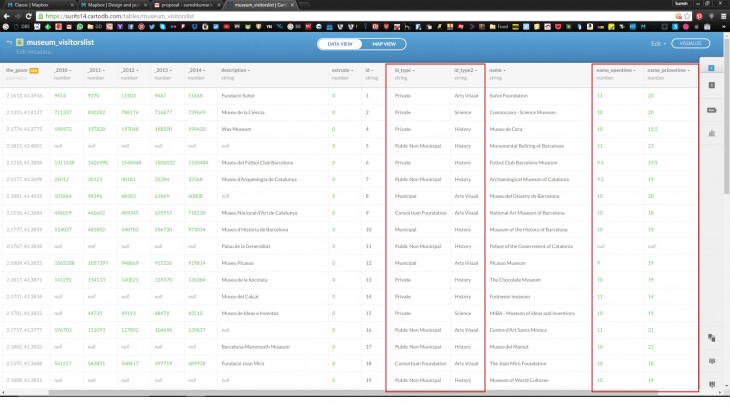
We further collected data about the type of museum (science, history or arts visual), ownership type of the museum(private, public or municipal) and also the opening and closing time.
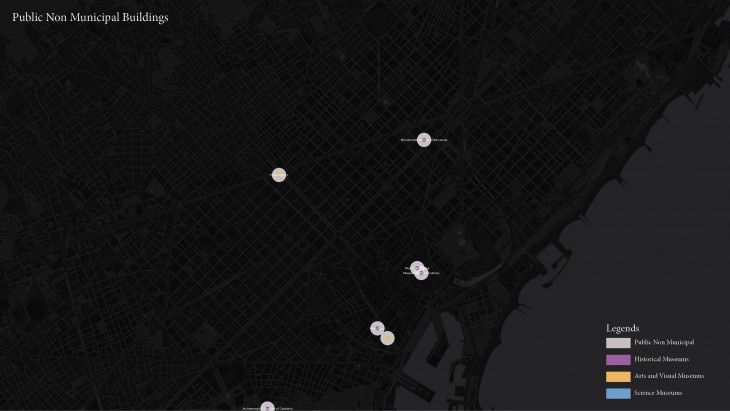


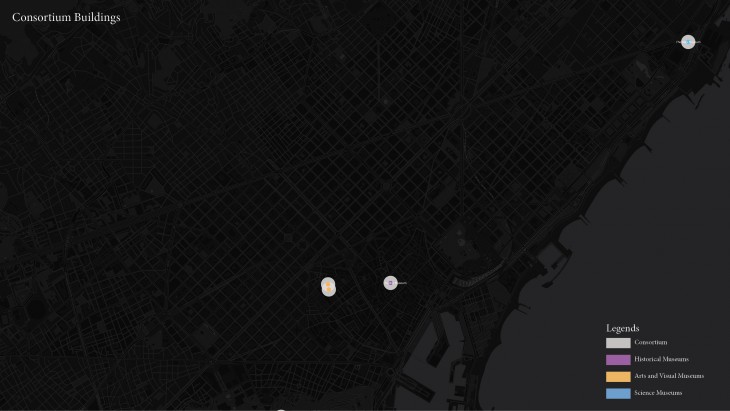
Till here we mapped everything we could using those datasets.
From the dataset we found one strange pattern in the tweets and Flickr photo tags which was, people tweet about a particular place or tourist attractions from different place around Barcelona irrespective of its location and distance.
The following two case study done using the maps that we generated displays those patterns at a particular radius from the main attraction spot.
Case Study 1 – Camp Nou
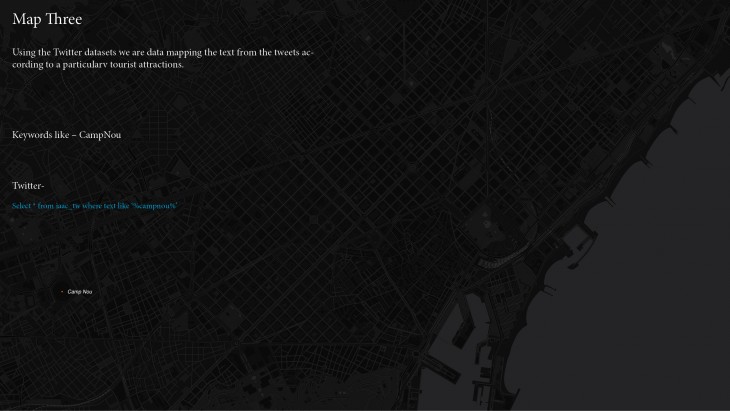
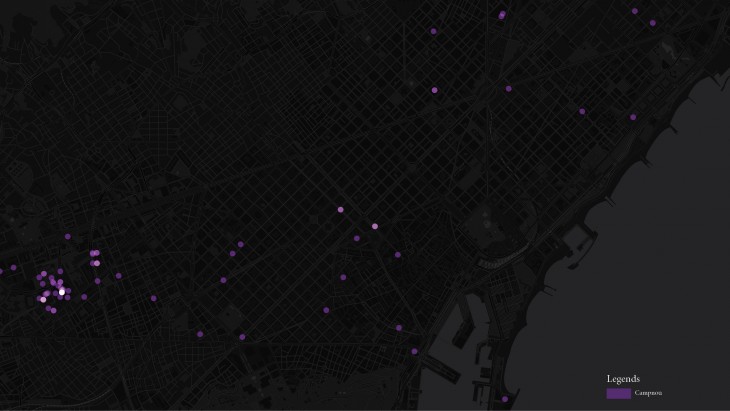
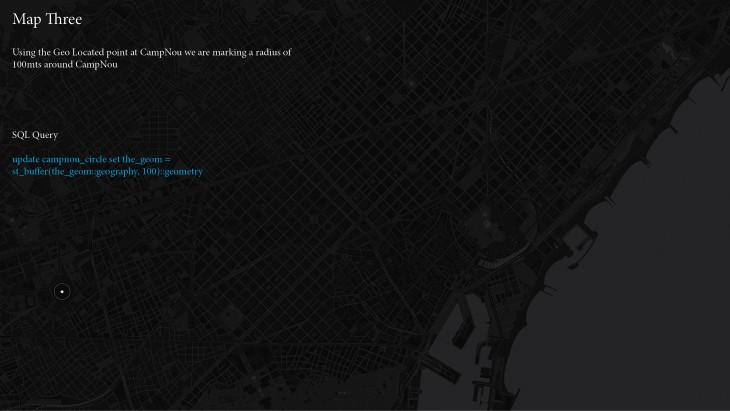
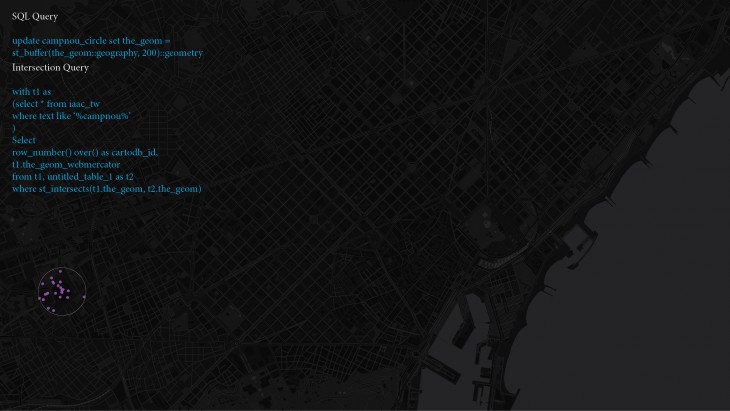
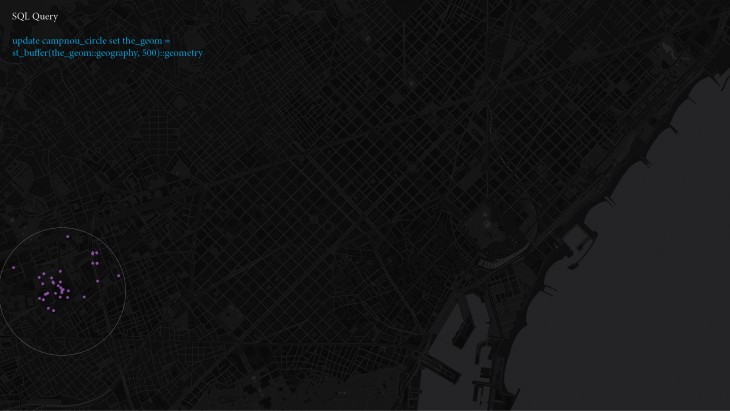
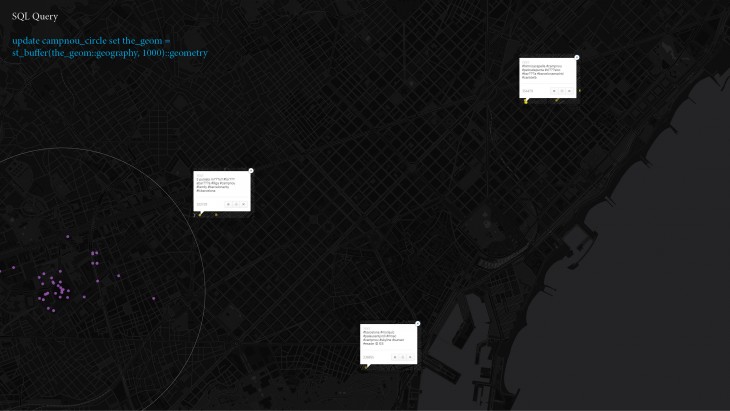
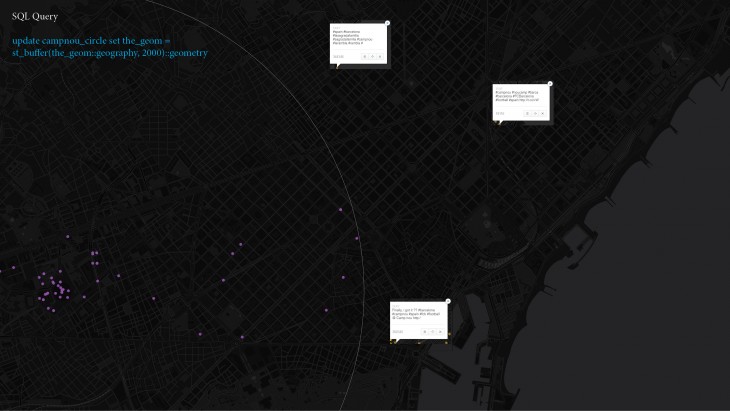
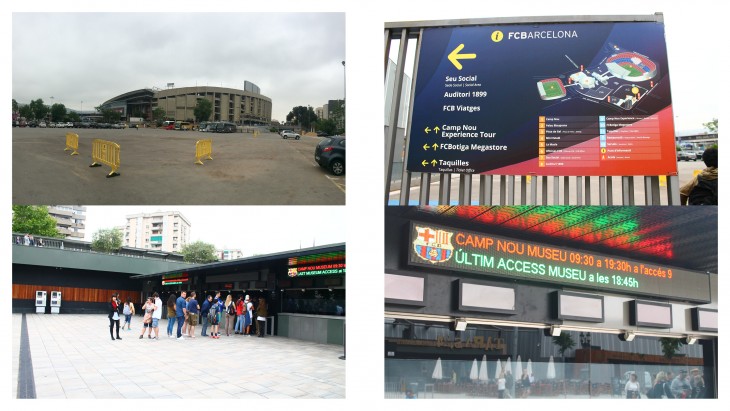
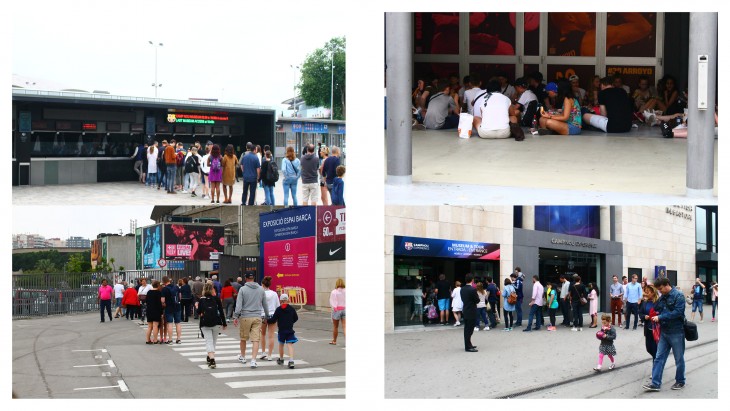
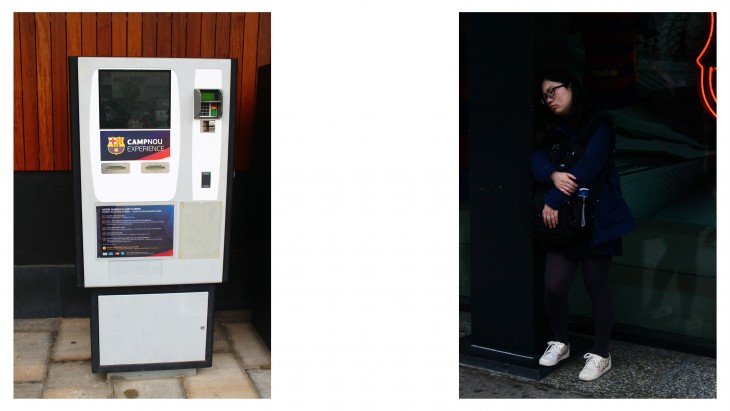
The above photos were taken during our case study visit to Camp Nou.
Case Study 2 (Sagrada Familia)
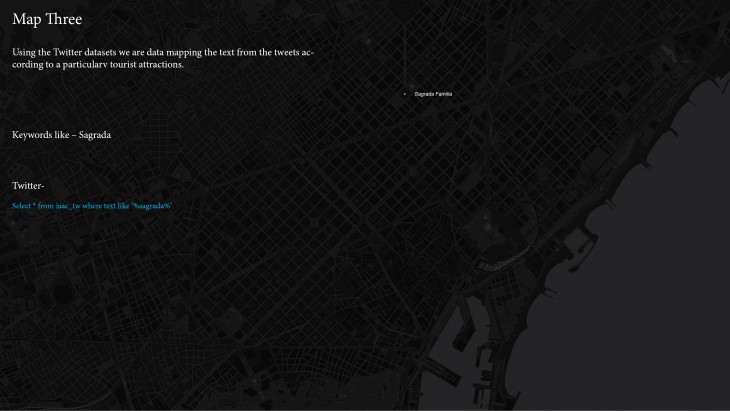
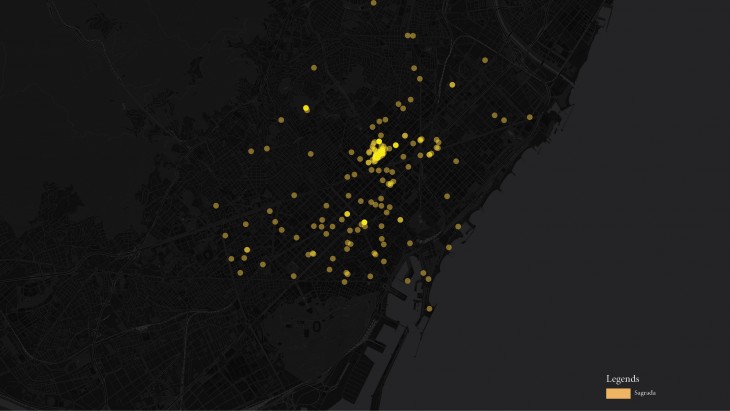
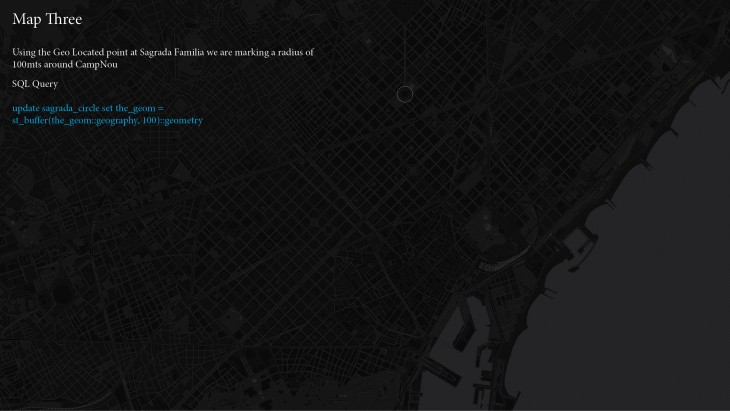
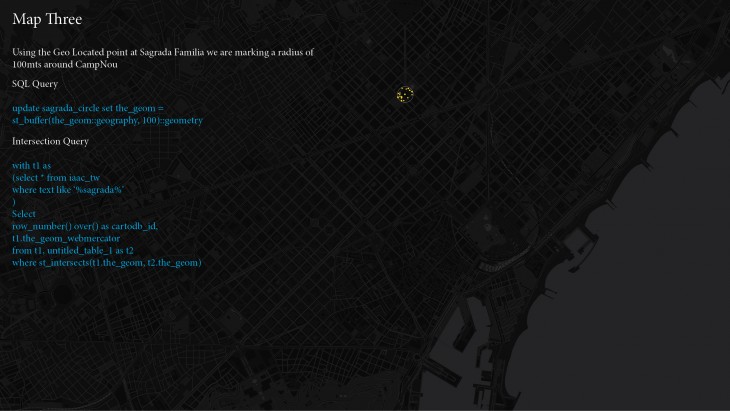
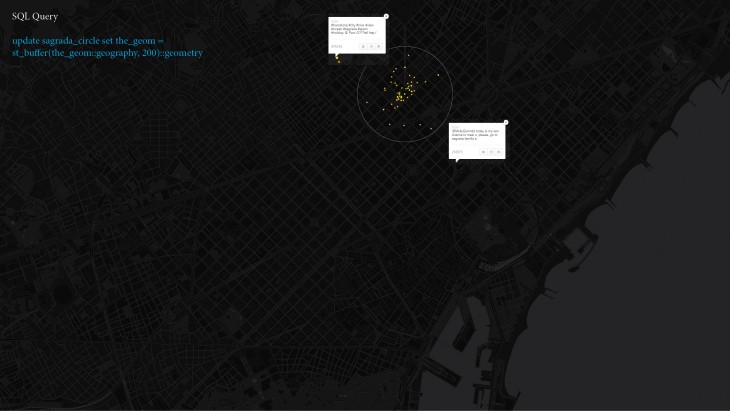
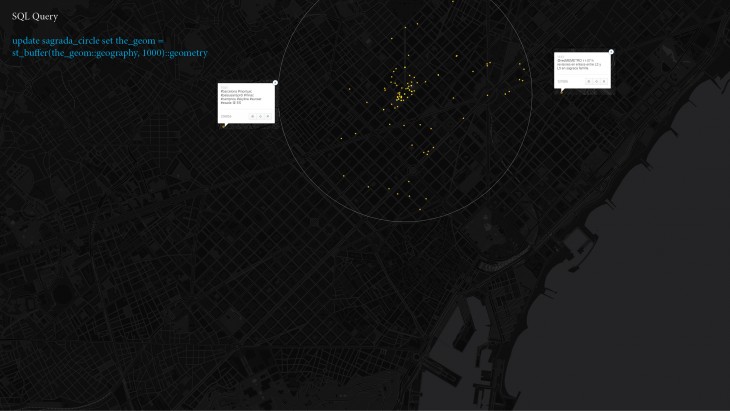
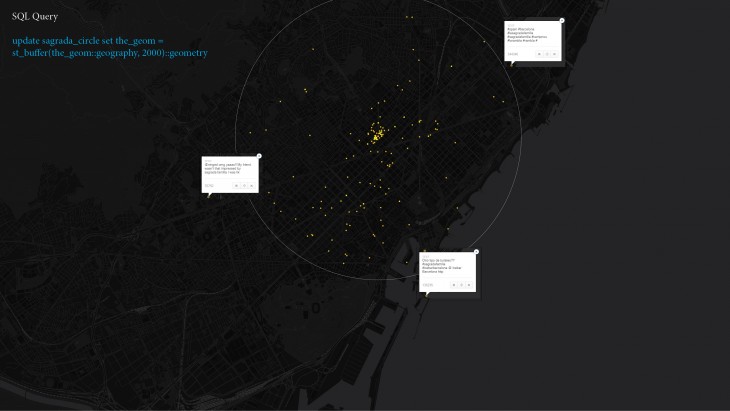
From the above two case studies we came to a conclusion that these tourist attractions are not only a spot for people to visit but a symbol which represents much more than that. It shows how people value these attractions. These attractions are not only mere buildings but also gives a sense of life to the people and tourist of Barcelona.
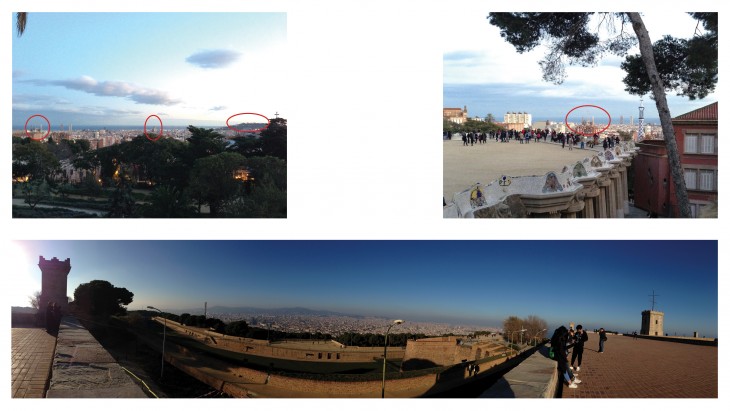
Apart from these case studies, we are proposing a strategic trip to visit the most visited tourist attractions by means of public transits within a day. This trip when completed, a tourist will have experienced everything that Barcelona is famous for right from Food, Rides, Attractions places, Mountains, Museums, Castle, Cable car, Metro service, Bus service, Walk in Ramblas at night, etc and much more all within a single day.
This is a proposal which suits the tourist who come for a day or two and feel bad about not experiencing Barcelona to its fullest.
Using the information such as Number of Visitors, Opening and Closing times, Typology of the Attractions we came up with this one day trip which starts from 8:30 AM at Park Guell to 9:00 pm at Plaza Catalunya.

The route and path timing taken to reach each proposed place were taken from Google Maps.
Tourist Attractions is a project of IaaC, Institute for Advanced Architecture of Catalonia developed at Master in Advanced Architecture in 2015-2016
by:
Students: Luis Bonila, Karthikeyan Dhanabalan and Sureshkumar Kumaravel
Faculty: Mar Santamaria and Pablo Martinez Diez
